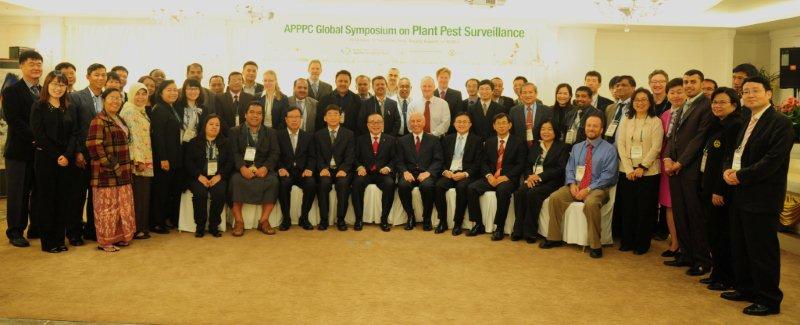APPPC symposium on pest surveillance
20/11/2012 Anyang, Republic of Korea

APPPC symposium on pest surveillance
29 Oct.-2 Nov. 2012, Anyang, Republic of Korea
The symposium on pest surveillance, which was organized by APPPC/RAP from 29 October to 2 November 2012 in Anyang, Rep. of Korea, was participated by about 50 experts from 28 countries (19 members of APPPC together with 3 non members of APPPC from the region, 5 delegates from Africa, Caribbean and Latin America, Europe and Central Asia, Near East and North America, 2 from IPPC Secretariat) as well as 6 resource persons from Australia, New Zealand and USA.
This symposium was established to develop assistance for countries in the implementation of International standard on phytosanitary measures (ISPM) 6: Guidelines for surveillance. It also set up for the first time priority setting for the development of manual guides based on comprehensive questionnaire results and manual framework description by an expert group with global representation.
Countries were to be assisted in the production of national manuals on surveillance. This was done by identifying the priority areas for attention. With these areas identified, manual frameworks were constructed by the meeting participants. These frameworks contained chapter headings with additional outline material included as appropriate.
Three basic areas of manual frameworks on surveillance were covered. These were:
-
Surveillance operational guidance
-
Surveillance technical support
-
Surveillance management support.
Under these headings, twenty manual frameworks were constructed. The manual guides will be produced by the International review and support system (IRSS) of the International Plant Protection Convention (IPPC) next year. The guides will act as basis material for countries to develop their own surveillance manuals.
The meeting had met the original aims of the APPPC in strongly moving towards the development of assistance that will help APPPC members implement ISPM 6. The meeting has also contributed to the work of the IRSS of the IPPC. The IRSS will be able to add the manual frameworks to the list of items it will attempt to find funds for the progress to manual guides. Overall, it is considered that these types of outputs that will be seen to be contributing to the work of FAO. This is the first time priority setting for the development of manual guides based on comprehensive questionnaire results has been undertaken. Also, it is the first time such information has been used by an expert group with global representation to develop manual frameworks.
The participants proposed future action for the reporting of the results of the meeting at the Commission for Phytosanitary Measures (CPM) and related meetings and the production of manual frameworks for ISPMs concerning pest free areas, pest status, pest reporting and pest lists. Participants also recognised the usefulness of the procedure developed for interpreting the ISPMs into practical documents that can assist countries implement international standards. This reflected the intention of FAO in developing systems that can impact within countries.
